The Oscar-winning documentary No Other Land is to be self-released on US streaming platforms next week after a rejection of a Mubi offer.
The film, which follows the forced displacement of Palestinians from their homes in Masafer Yatta by Israeli…

The Oscar-winning documentary No Other Land is to be self-released on US streaming platforms next week after a rejection of a Mubi offer.
The film, which follows the forced displacement of Palestinians from their homes in Masafer Yatta by Israeli…
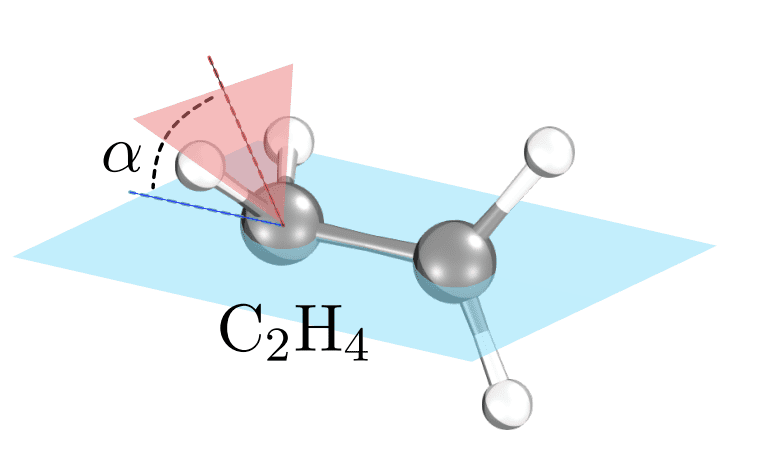
Quantum phase estimation, a fundamental technique for determining the energy levels of complex systems, traditionally focuses on individual states and demands precise input preparation. Researchers Stefano Scali and Josh Kirsopp, both from…

Ponsegromab treatment over 64 weeks resulted in sustained improvements in body weight and suppression of growth differentiation factor 15 (GDF-15), a stress-induced cytokine, irrespective of prior treatment assignment, with a consistent…
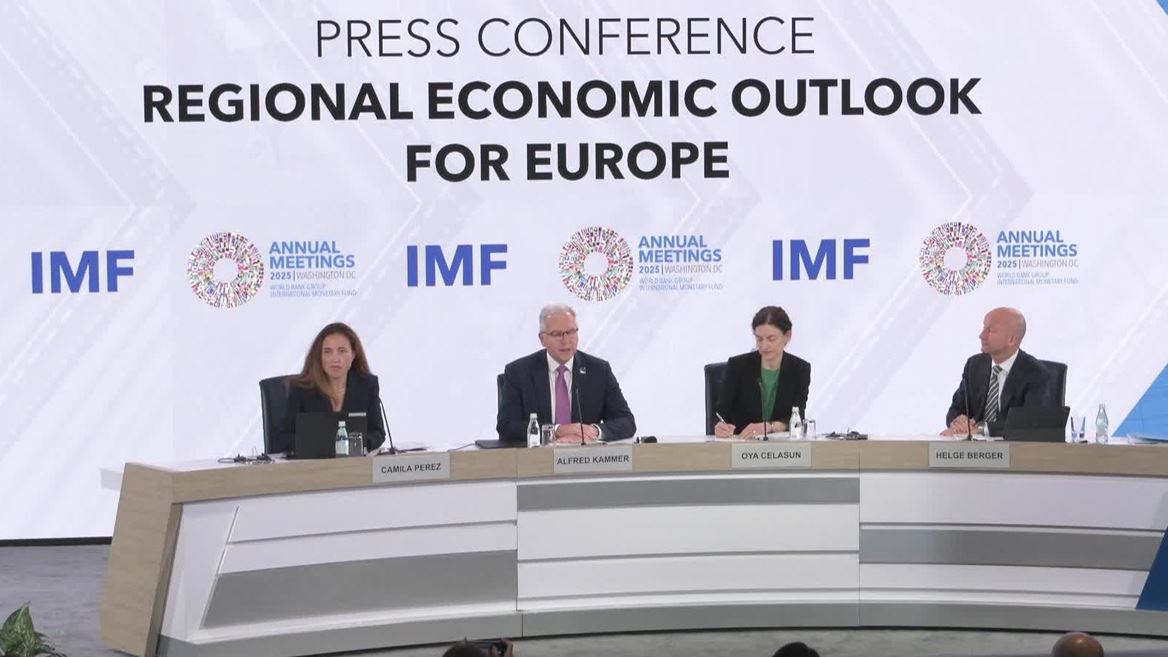
Effective policy action helped steer Europe through a strong post-pandemic rebound, though the recovery is now moderating as the region faces renewed headwinds. At the International Monetary Fund (IMF) 2025 Annual Meeting, Alfred Kammer, Director of the IMF’s European Department, cautioned that the region is transitioning into a period of weaker medium-term growth.
“The pandemic and the energy crisis were huge shocks. And because of good policymaking, we entered into a recovery, and recovery unfolded as we expected. And, what we see is now the end of that recovery. And the end of that recovery goes into the medium-term, dismal, mediocre growth for Europe; that is what we have been predicting. Second point to make: on the short-term, the recovery is being driven by higher real wages and their supporting consumption, lower interest rates are providing support to investment spending, and we are facing new headwinds since earlier this year. And they come from trade tensions and geopolitical tensions. And when you’re looking at our short-term forecast for this year, they have been influenced by frontloading, as a response to these tariff threats earlier on, before they became available. And, when we’re looking at the impact of trade tariffs and uncertainty for [20]25-[20]26, they are going to shave off growth by 0.5% cumulatively. And they are only partially offset by higher infrastructure spending projected for Germany, and higher defense spending,” cautioned Kammer.
As the recovery slows, policymakers are advised to turn their attention from managing near-term momentum to consolidating policy gains. This recommendation comes against the backdrop of the euro area and European Central Bank’s success in bringing inflation under control, which has helped stabilize the monetary environment.
“We have reached the inflation target and it looks like we have reached that, durably. And what it means for ECB monetary policy that, they can stay at a terminal rate of 2%. And our recommendation for the ECB is to only change the policy rate if or when material shocks strike, which would materially change the inflation outlook. A slightly different situation in the CC [Central and Eastern European Countries] countries where inflation is still 1 to 3 percentage points above target; there is still a risk of the anchoring of inflation expectations. And therefore, CC countries need to be more cautious in the disinflation effort; they need to remain data-dependent, meeting-by-meeting and need to ease only gradually,” advised Kammer.
As inflation pressures ease across much of Europe, the focus shifts to the deeper reforms needed to lift Europe’s weak growth trajectory. Policymakers are urged to tackle long-standing constraints by reducing intra-European trade barriers, advancing deeper capital markets through a Capital Markets Union, improving labor mobility, and developing an energy union to enhance affordability and stability. These priorities are essential to strengthening competitiveness and resilience across the region.
“Europe has excellent examples in place on what to do and how to do it. We put these reforms together and they would – the Euro level reforms first step, and structural reforms domestically – they would actually give a boost to the level of GDP over 10 to 15 years by 9%; that’s a large number. Use the European budget in order to incentivize reform. Use the European budget to actually generate savings for the European public goods. And those are public investments into R&D; those are public investments into energy and into defense – because a coordinated approach will overall provide savings and will provide a more effective system. We add a big message this time to our REO [Regional Economic Organizations], and that is, you also need to focus on fiscal consolidation. The package on the European reform and on the structural reforms that is going to create – when implemented – a lift in productivity, it will increase the income of Europeans, and it provides resilience, and it will also help on the fiscal consolidation side,” predicted Kammer
But reform alone won’t shield Europe from mounting fiscal pressures. Long-term spending demands tied to aging-related healthcare, pensions, digital transformation, the energy transition, and higher borrowing costs are projected to steadily push debt levels higher. Without meaningful fiscal adjustment, public debt would double over the next 15 years, driving the average debt ratio across Europe to around 130% of GDP. Stabilizing debt levels will require a clear and credible fiscal consolidation path.
“Do the structural reform and the productivity-enhancing measures, because they will not only increase your income, they will also be a considerable contribution to the fiscal adjustment effort; and they could lower the fiscal adjustment requirement over the next five years, by one third to one half of the efforts. So, a huge and important contribution to make from these. So, all clear. And, also, I would say when you talk to European policymakers: very much agreed by all of them. And it’s always in the implementation, and to overcome the political economy, resistance. And that’s a really, really tough part to do. And we are trying to support the European policymakers in creating a narrative, because you need to discuss this with the population. We are providing numbers on the huge benefits of actually acting. And, policymakers need to find ways to overcome these obstacles and act. And our view is: Europe can act, Europe must act, and Europe must do so now,” concluded Kammer.
A conference abstract presented at the European Society for Medical Oncology (ESMO) 2025 meeting looks at the…

San Francisco — San Francisco (AP) — An Easter egg dropped by Taylor Swift in the film for her new album is proving to be a boon for sea otters in Northern California.
The pop star wore a vintage Monterey Bay Aquarium otter conservation T-shirt…

For some cases of bacterial vaginosis, treatment should include a package deal, doctors now say.
The American College of Obstetricians & Gynecologists (ACOG) updated its clinical guidance…

A blood test for more than 50 types of cancer could help speed up diagnosis according to a new study.
Results of a trial in north America show that the test was able to identify a wide range of cancers, of which three quarters don’t have any form…

In recent years, digital health interventions, particularly eHealth and mobile health (mHealth) platforms, have shown promise in promoting healthy behaviors []. eHealth refers to the use of digital technologies, such as…
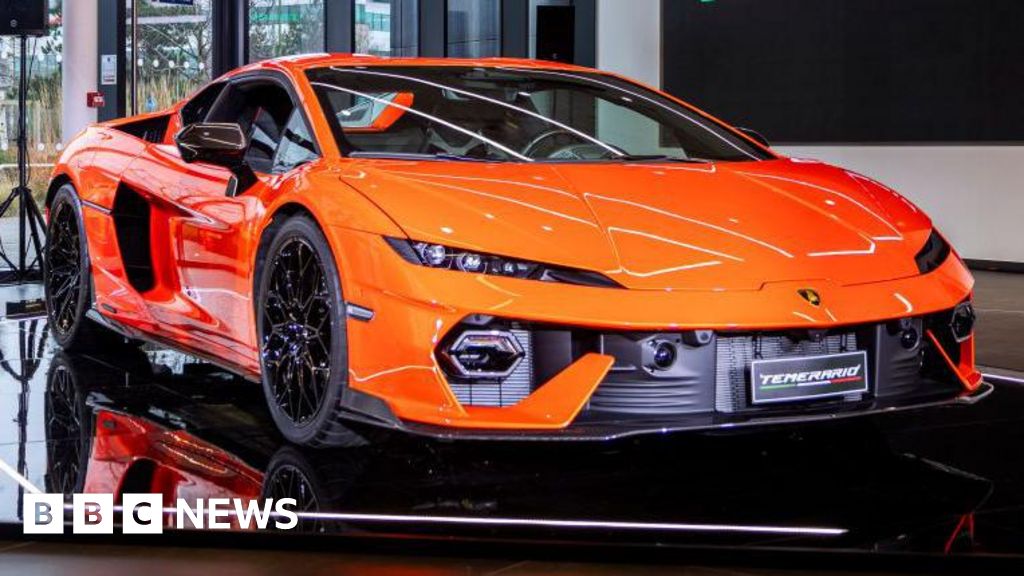
Theo LeggettInternational Business Correspondent
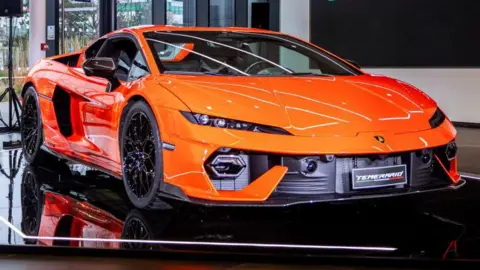 Getty
GettyThe boss of Lamborghini has said its customers still want “the sound and the emotion” of internal combustion engines, and the company will use them in its cars for at least the next decade.
Speaking to the BBC at the Italian supercar-maker’s London showroom, chief executive Stephan Winkelmann said enthusiasm for electric cars was declining – creating an opportunity to focus on hybrid power instead.
Lamborghini will decide in the next month whether a long-planned new model, the Lanzador, will be all-electric, or merely a plug-in hybrid, he said.
Mr Winkelmann insisted the business was socially responsible, but added that as a low-volume manufacturer, its actions would have a limited impact on the environment.
Lamborghini is a luxury brand ultimately owned by the Volkswagen Group. It currently has three main models.
The Temerario and Revuelto are supercars. Both are plug-in hybrids, combining powerful petrol engines with electric motors. They can run in all-electric mode, but only for very short distances.
The Urus is a luxury SUV, currently available as a plug-in hybrid and as a conventional petrol-powered car. Less exotic and certainly less ostentatious than the supercars, it nevertheless makes up more than half of the company’s sales.
There is also a limited edition ‘super-sports’ car: the Fenomeno, which has a top speed of more than 215mph. Only 30 will be built, each costing at least €3m (£2.6m) before taxes.
Two years ago, Lamborghini announced plans for an all-electric successor to the Urus, which would have been available from 2029. However, the plan was recently shelved, with the electric model now not expected before 2035.
It had also planned to make a brand new battery-powered grand tourer (GT), to be called the Lanzador. However, the future of that project is also deeply uncertain.
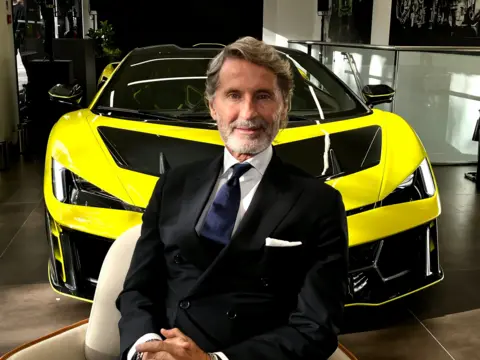
“We still need to decide whether we are going full electric, the decision we took some years ago, or seeing whether in the new environment this should also be a plug-in hybrid”, said Mr Winkelmann.
The new environment he referred to is a perceived waning of interest in electric cars among high-end buyers.
“Today enthusiasm for electric cars is going down”, he explained. “We see a huge opportunity to stay with internal combustion engines and a battery system much longer than expected”.
Continuing to use internal combustion engines for another 10 years, he said, would be “paramount for the success of the company”. Customers, he insisted, still hankered after the noise and fury of a conventional motor.
“This is something they want, they still want the sound and the emotion of an internal combustion engine”, he said.
It’s an approach that contrasts with that of Lamborghini’s Italian arch-rival Ferrari, which is pushing ahead with its own plans for a first all-electric car.
The aptly-named Elettrica is due to be unveiled next year, though the company showed off some key components at its Capital Markets Day earlier this month.
It will be sold alongside conventional and hybrid models.
Ferrari chief executive Benedetto Vigna said it would have driving traits that were “unique in the heart, in the soul of our clients.”
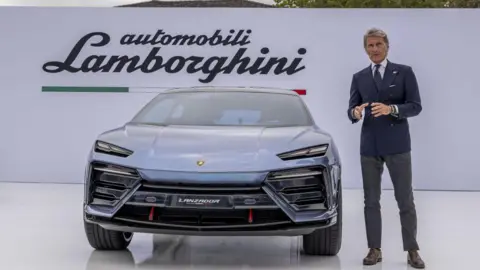 Getty Images
Getty ImagesMr Winkelmann insisted his own company was not ignoring the ongoing pressure to cut emissions.
“We are selling 10,000 cars in a world that is producing 80 million cars a year, so our impact in terms of CO2 emissions is not that important”, he said.
“For sure, we are socially responsible, but it doesn’t really make a lot of difference”.
The sale of new petrol and diesel cars, including plug-in hybrids, is due to be banned in both the the EU and the UK from 2035.
However, in the EU, there has been intense lobbying from some manufacturers for the transition to electric cars to be given more time, in order to “acknowledge current industrial and geopolitical realities”.
If that happens, internal combustion engines could remain on the market beyond the current deadline.
Meanwhile the UK’s rules provide an exemption for “low volume” manufacturers who register fewer than 2,500 new cars each year.
This would currently cover Lamborghini, which sold just 795 cars here last year.